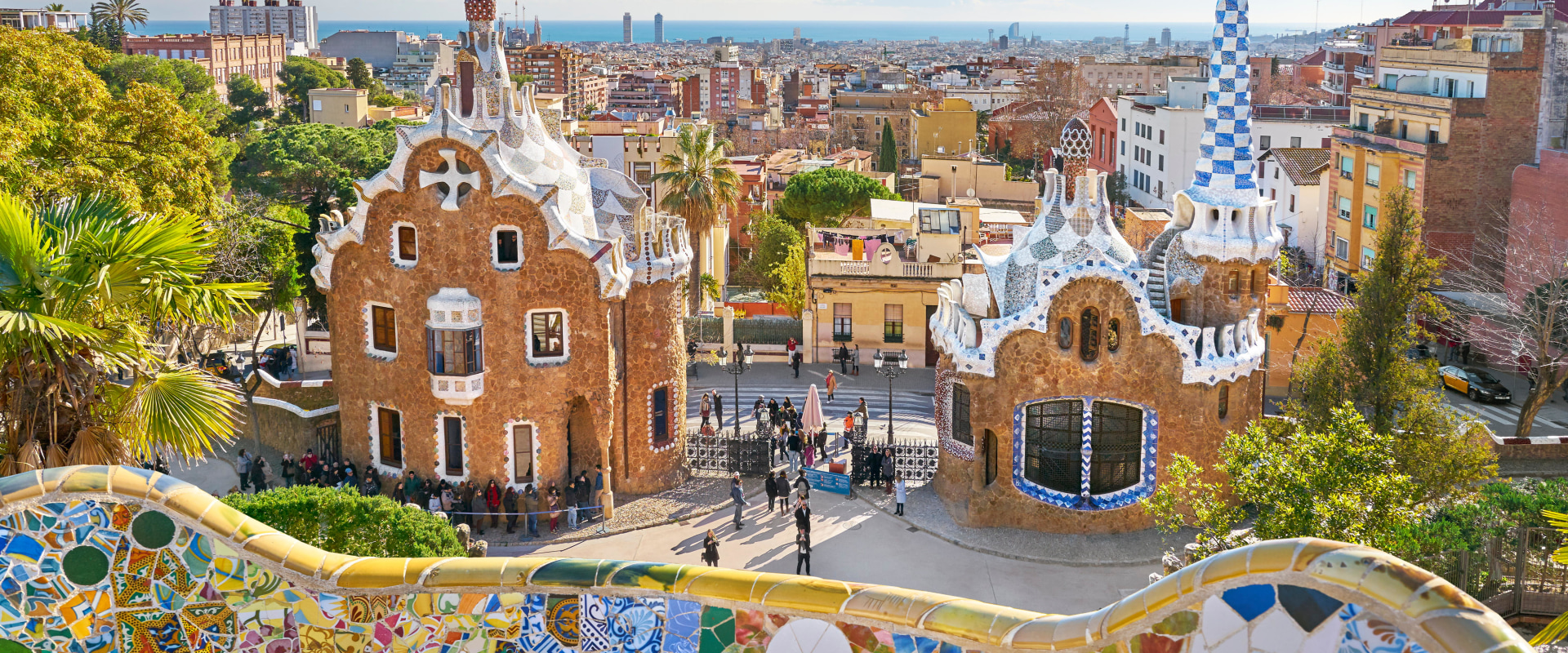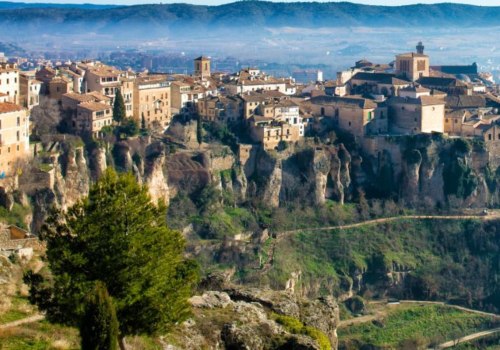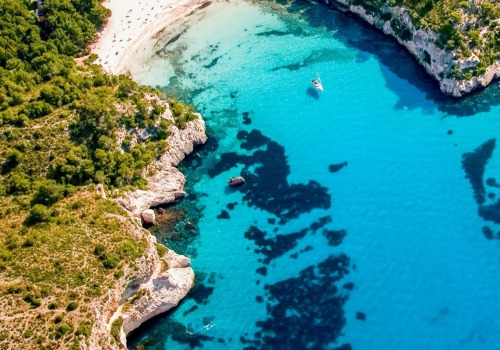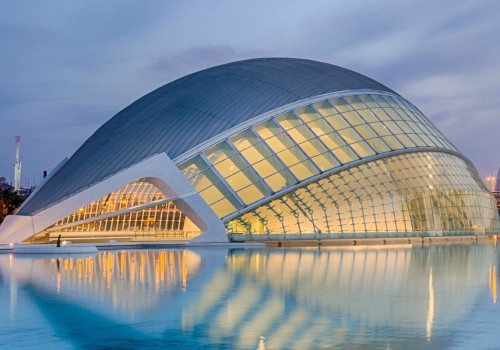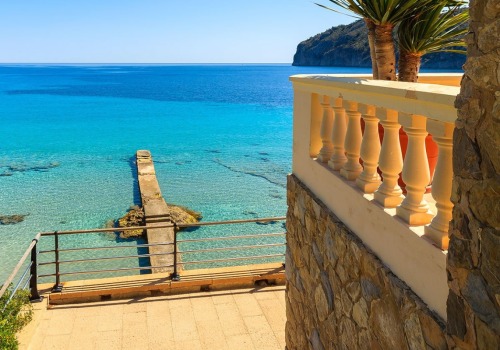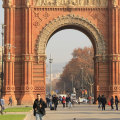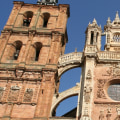Basilica of the Sagrada Familia · 2.Barri Gòtic (Gothic Quarter) · 3.Casa Milà (La Pedrera) · 4, Where to Stay in Barcelona · 14 Best Beaches in Barcelona The Basilica of the Sagrada Familia is located in the northern part of the city, dominating its surroundings with its 18 towers that rise above all other buildings. One of the most unconventional churches in Europe, this incredible monument is declared a World Heritage Site by UNESCO. The renowned Catalan architect of modern times, Antoni Gaudí, was commissioned in 1883 to design this Basilica as a neo-Gothic church. But instead of following the plans, he created a characteristic example of his famous surrealist Art Nouveau architecture.
I had no firm ideas in mind, preferring to alter and add to plans as work progressed. For 2,000 years, the Gothic Quarter has been the spiritual and secular center of the city. Here you can still find relics of ancient Roman buildings, but the Middle Ages are best represented by the historical monuments found in this neighborhood. Built mainly between the 13th and 15th centuries, the Cathedral of Santa Cruz and Santa Eulalia is the heart of the Gothic Quarter.
Around the cathedral there is a labyrinth of cobblestone streets and alleys. Built between 1906 and 1912, this extravagant avant-garde dwelling looks more like a sculpture than a functional building. Each line of the natural stone facade is curved, with rounded windows and metal balcony railings that roll up into vegetal shapes. Even the roof has a wavy shape, complemented by decorative fireplaces.
Visitors can stroll along the rooftop terrace to get an up-close look at chimneys adorned with oddly shaped mosaics. The roof area also rewards visitors with sensational views of the entire city, with views extending to the Basilica of the Sagrada Familia in the distance. The heart of Barcelona's social life is located on La Rambla, a wide tree-lined avenue that divides the old town into two parts. La Rambla stretches from Plaça de Catalunya, where you can find the beautiful 12th-century Romanesque convent of Santa Anna, to the port.
Another important monument on La Rambla (number 3) is the Palau Güell, a UNESCO World Heritage Site, an ostentatious mansion designed in 1886 by Antoni Gaudí. The owner, Eusebi Güell, was a great patron of the arts, and the building was built with a large vaulted room for poetry readings and private concerts. Open to the public for visitors, the building is adorned with sumptuous decor, valuable textiles and handmade furniture created by Gaudí. The interior decoration is equally colourful and extravagant inside the Concert Auditorium.
Adorned with modernist floral motifs and fruit motifs, this charming auditorium provides a wonderful setting for musical performances. The concert hall, with a capacity of about 2,200 people, is the only auditorium in Europe illuminated during the day completely with natural light. The sanctuary contains magnificent works of art, including the Altarpiece of the Transfiguration by Bernat Martorell, as well as other medieval altarpieces and a remarkable gilded monstrance inlaid with jewels. The cathedral also has an exquisite Gothic choir and cornerstones dating back to the 14th and 15th centuries.
Surprising many visitors, the cloister of the cathedral and the garden house 13 live geese symbolizing the martyrdom of Santa Eulalia. Cloister pond provides habitat for geese. Colourful, cheerful and full of fantasy, this lush 19-hectare hillside park has been declared a World Heritage Site by UNESCO. Created between 1900 and 1914, Park Güell includes 12 acres of landscaped gardens with surreal architectural elements created by Antoni Gaudí and eight acres of virgin forests (pine and olive groves).
For those looking for excellent gourmet food, the elegant Moments restaurant, with two Michelin stars, is just a few steps away, on Passeig de Gràcia 38-40, in the Mandarin Oriental, Barcelona. This top-notch haute cuisine restaurant serves modern gastronomic Catalan cuisine prepared with seasonal ingredients. The collection of the museum focuses on works created by Pablo Picasso when he was a young artist. With more than 4,000 works, the collection reveals the artist's talent during his formative years.
An exhaustive assortment includes paintings created from 1895 to Picasso's Blue Period (1901 - 190). Other highlights of the collection are several paintings created in 1917, among them Harlequin, with a character of a harlequin (the model was a dancer from a Russian ballet company); El Paseo de Colón, which illustrates the Hotel Ranzini at number 22 of the Colón corridor; and Blanquita Suárez, which represents a famous singer of the time. Also not to be missed is the series of paintings entitled Las Meninas, which portray the Infanta Margarita María. Just as Catalan modernist buildings are must-see attractions for architecture lovers, Camp Nou is a must-see for football fans.
Camp Nou was one of the venues of the 1992 Olympic Games in Barcelona and today it is the headquarters of the FC Barcelona team. The 99,354-seat stadium is the largest in Europe and the second largest in the world. The Barça Café at Camp Nou is a fun place to watch live and recorded matches on big screen TVs. The chefs work in an open kitchen, where guests can watch the action, preparing traditional Catalan dishes, such as grilled meat and fish cooked in a wood-burning oven, as well as some of the favorite tapas of FC Barcelona players.
Barça Café is open daily from 10:00 to 19:00. At the top of the list of things to do in Barcelona at night is to contemplate the Magic Fountain of Montjuïc, near Plaça d'Espanya, in the Montjuïc neighborhood. The large Art Deco fountain was designed by Carles Buigas for the 1929 International Exhibition, which took place in Montjuïc. This hilltop neighborhood is located on the site of an old Jewish cemetery, which explains its name, Mont Juïc, which translates as Mountain of the Jews.
Located 213 meters above the sea, the hillside is crowned by a fortress (Castell de Montjuïc) on its summit and slopes steeply to the promenade. Crowning this picturesque area is the Parc de Montjuïc, a beautiful natural park with great views. One of the main attractions of Montjuïc is the Museu Nacional d'Art de Catalunya (National Art Museum of Catalonia). Located in the Palau Nacional, the museum has an exceptional collection of Catalan art from the 10th to the 20th centuries, including sculptures, paintings, drawings, engravings and photographs.
The museum also exhibits European Renaissance and Baroque art, as well as a collection of modern art that includes avant-garde works created after World War II. El Poble Espanyol (Pueblo Español) is another popular place to visit. This charming fabricated village was created for the 1929 World Exposition. Montjuïc hosted the 1992 Summer Olympics, and tourists can visit the stadium where the Olympic competitions were held.
A wonderful example of Catalan Gothic architecture, the Reial Monestir de Santa Maria de Pedralbes is located on the gentle slopes of the hillside of Sant Pere Màrtir, on the outskirts of Barcelona. Queen Elisenda de Montcada founded the convent in 1327 for the Order of Santa Clara. The monastery exhibits an outstanding collection of medieval ecclesiastical art from the 14th century, as well as later religious art created throughout the 20th century. Since 1836, this traditional open-air market has been a centerpiece in the heart of the city of La Rambla.
Locals frequent the market regularly, and shoppers come from all corners of Catalonia to this truly special food and gourmet market. Anyone who appreciates modern art will want to visit the Fundació Joan Miró within the Parc de Montjuïc. Inaugurated in 1975, the Joan Miró Foundation was created by the artist himself as a research center for contemporary art. Today, the Foundation is dedicated to the study of Miró's work, as well as to the presentation of contemporary art.
The museum hosts temporary exhibitions of artists from the 20th and 21st centuries. Visitors will enjoy the permanent collection of paintings, drawings and sculptures by Joan Miró, as well as the thematic exhibitions. Located behind the Collserola ridge in the Horta-Guinardó district, this 55-acre park dates back to 1792 and is the oldest landscaped green space in Barcelona. The park combines formal gardens with a romantic garden that includes a waterfall and a forest.
Strolling through the Laberint Park you will discover small squares, vibrant flower beds, neoclassical sculptures of mythological characters and a labyrinth. Another treasure inside the park is the Sovereign Tower, a 14th-century manor house restored in the 19th century in Moorish style. In this area, the exceptional avant-garde buildings were inspired by the work of Antoni Gaudí and were built in the late 19th and early 20th centuries. Different architects left their mark on the neighborhood, and the result is a diversity of modernist styles.
Another beautiful building designed by Antoni Gaudí is Casa Milà, also known as 'La Pedrera'. Translated, this means the “quarry”, named for the rough appearance of the complex. The roof terrace with its special fireplaces is worth a visit. More information 'Casa Milà (La Pedrera) '.
The Pablo Picasso museum is located in the district of La Ribera. The Picasso Museum has more than 4,000 works of art by the painter Pablo Picasso, who spent an important part of his life in this city. At the top of the Montjuïc mountain is the Castell de Montjuïc, the 18th century fortress with a brutal history. The best way to reach the top is with the Montjuïc Cable Car, the funicular that leads to the castle where you will enjoy one of the most beautiful views of Barcelona.
Tibidabo is the 512-meter-high mountain on the outskirts of Barcelona. You can get to the top with a gear train, after which you can do three things on the top of the mountain. You can visit the amusement park 'Parque de Amusement del Tibidabo', visit the church 'Iglesia del Sagrat Cor', and the main reason is the phenomenal view from Tibidabo. The 14th-century Basilica of Santa Maria del Mar is located in the district of La Ribera.
It was built in the heyday of Catalonia as a commercial and maritime nation. It is possible to visit the beautiful basilica, crypts and towers. The surrounding La Ribera district is also a pleasant area to discover, with many art galleries, boutiques and bars. Barcelona is the second largest city in Spain with 1.6 million 'Barcelonans' and 4.9 million inhabitants for the largest metropolis.
The city was founded more than 2,000 years ago and played an important role during all those years, partly due to its strategic location by the sea. The hill of Montjuic with its fortress was strategically located overlooking the sea and the beach. In all those centuries, the metropolis of Barcelona was influenced by different cultures. Over the years, Barcelona, Spain, has welcomed the rest of the world.
That is why the city shows many influences and historical places of Barcelona and Barcelona landmarks from the World Fairs of 1888 and 1929, as well as the 1992 Olympic Games. Combine it with its mild and pleasant Mediterranean climate, its delicious Catalan cuisine, a lively nightlife, a shopping paradise and the numerous works of artists and architects such as Gaudí, Picasso and Miró. All this has made Barcelona one of the main tourist destinations, number seven on the list of the most visited cities in Europe. Plan your trip to Barcelona carefully; hotels are popular and tourist attractions such as Sagrada Familia and Park Güell have long lines and are often sold out.
Take your time to read all the tips for your visit to Barcelona and you are sure to spend some unforgettable days in this wonderful city. Choose your 20 best Barcelona tourist attractions, museums or must-see places for your city break or city trip from the list above. For each tourist attraction and highlight, you can read more information about opening hours, tickets, location and tours of these Barcelona sights. Read also more about Things to do in Barcelona with children.
On the list of the top 20 places of interest you will find buildings by Gaudí such as the Sagrada Familia, Park Güell, Casa Mila (La Pedrera) and Casa Batlló. Other highlights of the city are the Camp Nou stadium, the Gothic Quarter with the cathedral, the Ramblas and the Palau de la Música Catalana. Read all about Barcelona's tourist attractions. Gaudí's unfinished church is by far the most popular attraction in Barcelona and is known for its long waiting times.
To avoid disappointment, we always recommend booking tickets online, as church tickets sell out regularly in high season. Read more about booking tickets for the Sagrada Familia. The tranquil beauty of the Monastery of Pedralbes provides a safe harbor for travelers who want to escape the hustle and bustle of Barcelona. This Gothic monastery was built in 129 by Queen Elsenda, who sought the forgiveness of her sins.
It is considered an outstanding example of Catalan Gothic architecture. Barcelona is full of important buildings designed by the famous architect Antoni Gaudí. A good place for visitors to begin to appreciate his work is Palau Güell or Palau Güell. It is one of his first important works, and sets the tone for his designs to follow.
Gaudí designed Palau Güell for an extremely wealthy resident. Because the tycoon was very entertaining, the house was designed around a central corridor, with other rooms designed to fit the needs of the family. Gaudí's use of space and lighting at Palau Güell was innovative for its time. Built in 1929, Poble Espanyol is a huge open-air museum four times the size of the FC Barcelona football field.
The complex is composed of several sections, each of which represents a specific Spanish region. Joan Miro was one of the most famous artists in Barcelona, a master who created works known all over the world. Foundations are usually established after a person dies to honor his ideas, but Miro created his own legacy by creating Fundació Joan Miro himself. It was designed to be a place where younger artists could explore contemporary art, with Miro's own works as the nucleus for this studio.
The foundation was opened in a modern building in 1975 and is a good place to see a large collection of Miro's work in one place. Sitting on top of a hill, the Museu Nacional d'Art de Catalunya looks more like a huge castle than an art museum, a museum that keeps the rescue of a king in treasures. However, it is here that visitors will find the best Catalan art from the 10th to the 20th century. The Arc de Triomf was built in 1888 to welcome international visitors to the Universal Exposition of Barcelona, the world fair of its time.
The huge decorative arch is located on Paseo Lluís Companys, a promenade. It served this purpose for 100 years, and today it houses a variety of international organizations. The complex, with underground tunnels connecting the building, has a pavilion dedicated to the history of medicine in Barcelona. Integral to the square are six sets of sculptures representing the four capitals of Catalonia, work and wisdom.
The square was inaugurated in 1927 on land that once faced the gates of a walled Barcelona. Built at the beginning of the 20th century, the Palau de la Música Catalana is a tourist attraction in itself, with its stained glass windows and huge chandeliers. The interior of the old room has been compared to the interior of a Fabergé egg. A smaller room is more modern and subdued, but still opulent.
Travelers who get panoramic views should go to the top of Tibidabo, 512 meters (1,880 ft) high, the highest mountain overlooking Barcelona. The easiest way to get there is via the first funicular railway in Spain. But there is more than just stunning views at the top of this mountain. Over the centuries it was transformed into peaceful uses, becoming an important oasis of green in the city.
Citadel Park was the site of the 1888 World's Fair. Today it houses a zoo, a small lake, the Museum of Natural Sciences and Als Voluntaris Catalans, a sculpture honoring the Catalans killed in the First World War. The cathedral dates back to the 14th century and pays homage to St. Eulalia, co-patron saint of Barcelona, who was murdered by the Romans by putting her in a barrel studded with knives and rolling it down the street.
The whole church is ornate, with towers and spires that extend into the sky. It is a major tourist attraction and now has a gift shop that caters to visitors. Foodies may think they've died and gone to heaven when they visit El Mercado de La Boqueria, a colorful market (and tourist attraction) in the old town. Located right next to La Rambla, the market dates back to 1297, when meat was sold at the gates of the city.
Nowadays it sells more than meat. The beautiful Santa Maria del Mar (Santa Maria del Mar) is an icon for Catalan Catholics. The construction of this huge church began in 1329, when King Aragon Alfonso IV laid the first stone. It was completed in 1384, an excellent example of Catalan Gothic architecture.
Another interesting place is the Palau Nacional (National Palace), originally built as the central pavilion of the International Exhibition. The majestic Neo-Baroque building houses the Museu Nacional d'Art de Catalunya (MNAC). Montjuïc is also home to a number of sports facilities built for the 1992 Olympic Games. Built between 1906 and 1910, Casa Milà (La Pedrera) was the last civil work designed by the Catalan architect Antoni Gaudí.
The colorful building is considered to be one of the artist's most eccentric and attractive architectural creations, without a single straight line on the outside. Travellers will see the Jewish Quarter, considered the most beautiful section of the Gothic Quarter; they will walk the trails where a young Picasso went to school; they will eat at Can Culleretes, the oldest restaurant in Barcelona, which dates back to 1796, and shop in the colorful market of La Boqueria. Of the seven different beaches in Barcelona, which extend along 4.5 km (2.8 miles) of coastline, Barceloneta probably tops them all. It is one of the most popular and is closer to the city center.
Along the 1,100 meter (3,600 ft) sandy beach there is a walkway popular with runners and cyclists. Font Màgica is a fountain located below the Palau Nacional, on the hill of Montjuïc and close to Plaça d'Espanya and Poble Espanyol in Barcelona. The fountain, like most surrounding developments, was built for the 1929 Barcelona International Exhibition. The Sagrada Familia is Barcelona's most popular attraction and attracts almost 2.8 million visitors every year.
It is a large and intricate basilica designed by Antoni Gaudí, a Catalan architect. Construction began in 1882 and continues to this day. The building is expected to be completed in the next 30 years. It should be noted that this beautiful basilica has been financed entirely with donations, as Gaudí intended.
After his death, a number of talented architects continued construction according to Gaudí's plans. Unfortunately, during the Spanish Civil War of 1936, a fire destroyed many of these plans. Trying to follow the remains of the original designs has been a challenge for the current architects working on the building. The design of La Sagrada Familia incorporates interpretations of many architectural styles, such as Arat Nouveau, Gothic and Catalan Modernism.
Gaudí's original plans called for a temple large enough to hold 13,000 people. Because he didn't like straight lines, his towers were inspired by the peaks of the mountain of Montserrat on the outskirts of Barcelona, and had similar uneven lines. Anyone interested in architecture will find this fascinating building to study. The plans include 18 needles, representing Jesus Christ, the Virgin Mary, the four Evangelists and the Twelve Apostles.
Work continues on some of these needles, while others are open to the public. Rising above Barcelona's urban landscape, the Sagrada Familia will be the tallest church in the world once completed (estimated at 202). This 130-year-old work of love, devised by Antoni Gaudí, is one of the most controversial basilicas in the world, but also one of the most visited. Three million tourists flock here every year to be amazed at the architectural achievement that has united nature, light and religion in an impressive ensemble.
The interior is like a giant puzzle, where the style of each new architect mixes with the rest of Gaudí's visionary design. Three million visits a year for something that hasn't even been finished is not bad at all. Barcelona has more than 4.5 miles of beaches, from Sant Sebastià to Llevant. Many can be found in Barceloneta, the famous maritime and workers' quarter that emerged on the island of Maians in the 17th century.
It is worth a stroll through the streets of Barceloneta to admire its modest but charming two-storey houses. Another attraction is the excellent and varied cuisine of the area, ranging from tapas and vermouths to paellas and seafood. You can also spend a few good hours checking out the dazzling yachts that line the marinas, such as the Port Olympic complex. This is, without a doubt, the most famous street in Barcelona.
Stretching from Port Vell to Plaça de Catalunya in the center, La Rambla offers a wealth of shops, flower stalls, works of art and attractions. Don't miss the ornate Canaletes fountain, the Boqueria market, the Liceu opera and the Teatre Principal. It's a straight line and a little miles of good things. It also takes you practically right by the sea.
If the quality of a museum is measured by the number of people who queue to enter, the Picasso Museum ranks first. The museum was created by the artist himself and his friend and secretary, Jaime Sabartès, who donated their collection to the cause. More than 3,800 works make up the permanent collection, and it also houses a series of temporary exhibitions. It is located in the Hôtel Salé, on rue de Thorigny, making it a great place both outside and inside.
Its holders have had to learn languages and devote themselves to public relations, because in addition to being the main food market in Barcelona, La Boqueria is now an important tourist destination. Right next to La Rambla, it is the largest market in Catalonia with more than 300 stalls and an area of 2,583 square meters. It's a lot of people selling bits, lots of canvas roofs. Think of some dark delicacy and you will almost certainly find it here.
And artisanal products abound. After a walk, you can always have something to eat in Quim de la Boqueria, if you haven't armed yourself with snacks from the market itself. It has been described as rising mass, molten lava or a stone lung. Make up your own description, it's a bit of weird and wonderful modernism, put it that way.
Casa Milà (popularly known as La Pedrera, “the stone quarry”) is a bold example of Gaudí's use of stone. You haven't seen a stone like this. When La Pedrera, its latest civic project, was first launched in 1906, the building became a laughing stock with its undulating façade, wrought-iron balconies and huge windows. Today, of course, it looks quite differently, and Gaudí's innovative self-supporting stone exterior has earned it a place on the UNESCO World Heritage list.
Not far from the Sagrada Familia there is another modernist jewel, the spectacular Domènech i Montaner hospital. The architect was inspired by the ideals of hygiene and the state-of-the-art hospitals in Europe of the time, so he designed a center with isolation rooms (each for a particular specialty), surrounded by gardens and connected by underground passages. Domènech i Montaner believed that aesthetic harmony and a welcoming environment were good for health. After more than 80 years of service, the hospital was moved to another, more modern building and the renovation of the old building began.
You can now visit with or without a tour guide to discover the history of one of the oldest hospitals in Europe. It is, and was, a city within a city. The largest Art Nouveau complex in the world, which sounds like a niche, but it doesn't matter. It's the biggest, something, in the world.
So you could also come and give them the right to brag about travel around the world. There are also a lot of underground galleries. Most locals only see this light, music and water show when they are young children or when they have to act as tour guides for visitors. But whether you have your own offspring in tow or not, the program makes us all feel childish wonder.
Designed by Carles Buïgas, it is one of the last remaining attractions for the 1929 International Exhibition. It was restored in 1992, and now it performs a show every half hour. So you can catch him when you're relatively close. It is on Avinguda Maria Cristina, which is located in the Montjuïc district.
CaixaForum is another example of a brilliantly restored building. Puig i Cadafalch built this old textile factory at the foot of Montjuïc for businessman Casimir Casaramona. After being abandoned for years, the Fundació La Caixa bought the building, an example of industrial modernism, and gave it a new role, as a cultural, social and educational center. It was inaugurated in 2002 following renovation works by Arata Isozaki, Francisco Javier Asarta, Roberto Luna and Robert Brufau.
In addition to the permanent collections of contemporary art, there are three spaces for temporary exhibitions and a program that includes concerts, conferences, screenings, guided tours and activities for children. So yes, it may sound like a pharmaceutical company (the name is partly because it is sponsored by Caixa bank and its foundation), it is a wonderful place to visit, with landscapes like no other. And art is also good, of course. For many in Barcelona, Sant Felip Neri is the most beautiful square in the whole city, perhaps because of its simplicity.
You can get there by walking through the narrow streets of the Old City. The square is built on the old medieval cemetery of Montjuïc del Bisbe and has a church and a school of the same name, some Renaissance buildings and the former headquarters of the craftsmen and shoemakers guilds, which now house the Footwear Museum. If you look closely at the façade of the church of Sant Felip Neri, you will notice the shrapnel of a bomb dropped by Franco's forces during the Civil War, which tragically killed 42 people, most of them children. So it's not the lightest place to walk during the tour, but sometimes the most important thing about learning is the heaviest.
In addition, it is open 24 hours a day, in a sense, given that it is in a public square. These never appear on standard city tours, which is a shame, because if you don't visit them, you'll miss some of the best views of Barcelona. Anti-aircraft guns were built in 1937, during the Civil War, when Barcelona was hit by almost 200 bombardments a day. Since the 1950s, with the rise of immigration, people have moved.
A shantytown emerged and residents fought for improvements (electricity, water, paper bins), and were later relocated to buildings with better conditions. When Barcelona hosted the Olympic Games in 1992, the city demolished the huts and left space. It was the locals who later fought for its recognition as a place of historical importance. Besides, the views, yeah, they really are that good.
Intentionally so is it, originally the bunkers were intended to be used as a place where soldiers could inspect the entire city. The 'Estación Francesa' is a product of the 1929 Barcelona International Exhibition and is the second largest station in Barcelona after Sants. Comparable in elegance and grandeur to the old Orsay station in Paris, its vast metal arches are a good example of cast-iron architecture. The Noucentisme-style lobby of Duran i Reynals hosts today events including vintage fairs.
When you visit the Palau de la Música, all your senses feel and realize it, because every inch tells a story of modernism, music and Catalonia. It was built in 1908 by Lluís Domènech i Montaner and today it is a World Heritage Site by Unesco. The Muses guard the main concert hall, and on the façade you'll find busts of Palestrina, Bach, Beethoven and Wagner. In the middle of Diagonal Avenue is Casa Planells, a building by Josep Maria Jujol, another of the great Catalan modernists, but more discreet than his contemporaries.
In a small area, he managed to design an impressive building, without exaggerating the ornaments and with a rounded facade. Inside, the most striking aspects are the staircase and the wrought iron railing. However, it doesn't exactly look boring from the outside either. It's small and peculiar, unlike La Sagrada Familia, which is just down the street, it's huge.
It's hard to imagine a hill with more things to see and do. If you fancy a day of walking through parks and gardens, Montjuïc is a good option. You can visit the castle (originally a fortress and, after the Civil War, a military museum), eat at the Caseta del Migdia with Barcelona at your feet and then explore some of the most beautiful landscaped gardens in Europe. Among the best are the Laribal gardens (with its beautiful waterfall), the Albéniz mansion (free admission on Sundays and during the Mercè festival), the Mossèn Cinto Verdaguer gardens (dedicated to bulbs, rhizomes and aquatic plants) and the Joan Brossa gardens (a brilliant example of land restoration; for more than 30 years this was the amusement park of Montjuïc).
It is the most famous cat in Raval, in fact, in all of Barcelona. Since the Council bought it from Colombian artist Fernando Botero in 1987, the poor cat has moved several times. First it was in Ciutadella Park, near the zoo; then, coinciding with the 1992 Olympic Games, it moved to the Olympic Stadium; then, several years later, it moved again, to a square behind Drassanes. Now she seems very happy in her house on Rambla del Raval, and the neighbors love it.
British theatre director Peter Brook is credited with transforming this former flower market into a place for the performing arts in 1985, when he was looking for a place to stage his legendary production of 'The Mahabharata'. After decades of fairly diffuse programming, Mercat has finally focused on national and international contemporary dance, offering a powerful program that experiments with unusual formats and mixes new technologies and live music. It also does a good job of supporting emerging dancers. The Palau Güell may not be Gaudí's best-known work, but it was his first major project for the Catalan capital.
A perfect combination of old-fashioned opulence and stylized modernism, this Unesco World Heritage Site mansion will have you picturing yourself rolling in a horse-drawn carriage. Tucked away in a narrow street in Raval, Palau Güell, designed by Gaudí for his patron, Count Güell, stands today as a symbol of Catalan nationalism. As you explore the house, notice how the rising levels (from the modest basement to the ostentatiously colourful ceiling with 20 mosaic fireplaces) reflect the reason for wealth. You can explore Cervantes Park by going up from Avenida Diagonal, where the main entrance is, or down Ronda de Dalt for a more relaxed stroll.
This large green space is highly appreciated by walkers and athletes for its wide trails and its sunny and shady spots. But in any case, it is known for its rose garden. From early spring to autumn, more than 10,000 roses fill four hectares of only a small part of the park. And at the beginning of May, the garden hosts the International New Roses Competition in Barcelona.
The largest cultural center in Spain was inaugurated in 1994 in the Casa de la Caritat, a former hospice, built in 1802 on the site of a medieval monastery. The huge façade and part of the courtyard remain from the original building; the rest was rebuilt in dramatic contrast, all of tilting glass and steel, by architects Piñón and Viaplana, known for the Maremagnum shopping center in the port of Barcelona. Most of the building is dedicated to exhibitions, but it also hosts music festivals, films, conferences and debates. And on the first Sunday of every month, you can visit its viewpoint for free.
Slowly, skaters are taking over this square, but they can't take away from Barcelona's imposing Museum of Contemporary Art, or MACBA. It is an impressive building, designed by American architect Richard Meier, with a large glass façade and a combination of straight lines and cylindrical shapes. Since its opening in 1995, MACBA has become the main institution of contemporary art in the city in all its forms. Built in 1846, the Mercat de Santa Caterina is the second oldest market in the city.
The renovation project was carried out by a team of architects led by Enric Miralles and Benedetta Tagliabue, its most distinctive feature probably being the magnificent mosaic ceiling made with 325,000 pieces whose colors echo the fruit and vegetable stalls underneath. If wandering through so many fresh produce makes you hungry, you can eat at Cuines de Santa Caterina, a lively restaurant with international dishes available in its various bars. The main façade of this Catalan-Gothic church on Plaça del Pi features a large rosette of 12 branches from the 14th century. It was destroyed in the fire of 1936 and rebuilt between 1939 and 1943 by the architect Josep Maria Jujol.
In addition to admiring the two octagonal towers that flank it, the huge bell tower and the image of the Virgin Mary with the Child on the eardrum, visitors can also attend concerts and classical guitar exhibitions. La Rambla, or Las Ramblas, as it is sometimes called, is the most famous boulevard in Barcelona. The Sagrada Familia is one of the most incredible works I have seen in my life. The monument is the most visited in Spain and receives an average of 3 million visitors a year, and is a symbol of modernism.
At first, the project consisted of the construction of a cathedral in the Gothic style. When Gaudí took over the work in 1883, he modified the project. It retained its Gothic characteristics, but added a bit of Art Deco and, above all, its unmistakable style. Also, another thing I want to make clear to you is that there are different entrances to the interior of the basilica.
I have counted eight different ways. Basically, the difference is that there are simple entrances and others with tower ascent. There is also the possibility of an audio-guided tour and another guided by a specialist in the Sagrada Familia temple. Another jewel of Barcelona that cannot be left out of your itinerary, the Gothic Quarter, was one of the places I liked most to visit in the city.
Casa Milá is also one of Gaudí's most famous works and is right on the corner of one of the blocks in the most charming area of the city. It is impossible not to be enchanted by the façade in waves with twisted irons, very nice in fact. I had some doubts as to whether I would pay to enter Casa Milá, because I had already known Batlló inside, but since I had free time, I decided to enter. The tour of this house is also audio-guided, and it is actually a building that contains apartments where people still live today, so you shouldn't make too much noise inside.
And I ended my visit with a snack in the café on the ground floor of Casa Milá. By the way, sometimes interesting things happen in front of Casa Milá, since it really is one of the most visited tourist attractions in Barcelona. When I went, they put a piano on the sidewalk and several anonymous people could sit and play. A little girl played “Despacito” very well.
Another of Barcelona's most famous tourist attractions are Las Ramblas, located between the Gothic Quarter and the El Raval neighborhood. This street is very famous as it houses many bars, restaurants, nightclubs and shops. In addition to enjoying the work of street artists performing on Las Ramblas, it is also in this region that the famous statue of Christopher Columbus points towards the Americas, which is about 50 meters high and can be seen from different points. Parc Güell was the place where I spent the most time, among all the places of interest in Barcelona.
I really like places that put you in touch with nature, and I think it's even more special when it happens in big cities, invaded by buildings and constructions. It is at this stage that Messi and company worked their magic, and you can get to know them up close with the Camp Nou experience. During the Camp Nou tour, I had the opportunity to discover the stands, the field, the Barcelona Football Club museum and much more. The Basilica of Santa Maria del Mar is one of the most beautiful churches in the city.
It was built in the 14th century, when the region was a fishing village. Its façade is composed of a beautiful door, the stained glass windows above and two very thin towers. Until the construction of La Sagrada Familia, the Cathedral of Barcelona was the most important church in the city. And he stayed in that position for a long time.
It was built between the 13th and 15th centuries in the Gothic style. Its façade impresses with its grandeur and richness of details. With its large portal and three towers, the cathedral stands out from other buildings in the Gothic Quarter. Inside, it has a gigantic nave full of tall columns.
The market is right in the middle of Las Ramblas, and that's why it's busy all day. It is impossible to pass it without realizing the multitude of people who come and go with bags in their hands. I can say with confidence that it has long since ceased to have the sole function of supplying food to residents, becoming one of the most visited tourist attractions in Barcelona, attracting many curious tourists. The Palau de la Música Catalana was built in 1908 with a unique style.
Full of exotic details and decorations, the building has an iron structure and many glass details. The main auditorium has a completely unconventional look for a concert hall. So Gaudí refurbished absolutely everything in the house, from the building's facade to the terrace. Improved lighting and with its renovations, the building that was 21 meters high is now 32 meters.
I loved Casa Batlló and was even more impressed by the talent of the architect. In fact, it impressed me more than with the Sagrada Familia, because I am already used to seeing monumental churches, especially in Europe. But seeing a building with such peculiar shapes inside and out really impresses. It is not surprising that this work, in addition to being one of the best tourist attractions in Barcelona, is a great icon of modernist architecture.
The Ciutadella Park was the first park in Barcelona and also the only one in many years. The park has an area of approximately 17 hectares, which houses several attractions. Fortunately for tourists, there is a wide variety of hotels in all price ranges in the most convenient neighborhoods. From huge museums to parks and modernist buildings, these are the best attractions and places to visit in Barcelona.
Because this is one of the most popular tourist sites in Barcelona, it is recommended to arrive early (if possible in the morning) to avoid the crowds. Many of Barcelona's attractions are concentrated in the evocative and winding streets of the Gothic Quarter and in the neighbouring Eixample district, with others scattered in several directions. It is the oldest neighborhood in Barcelona and one of the best tourist attractions in Barcelona when it comes to history. Barcelona is one of the most popular tourist destinations in the world, attracting millions and millions of visitors every year.
Magnificent landscapes, stunning architecture and magnificent cultural attractions make it an attractive destination. Whether you're a fan of medieval history, an architecture enthusiast, a football fan or a foodie, Culture Trip has brought together the 26 main attractions you can experience when you visit the Catalan capital. The Picasso Museum, one of the best tourist attractions in Barcelona, is located in the El Born neighborhood and is an essential visit. Another of Antonio Gaudí's creations is once again among the 10 most visited attractions in Barcelona.
Its main attraction is the Benedictine monastery of Santa Maria de Montserrat, one of the most important religious sites in Catalonia. Designed by Gaudí, the iconic architecture of Casa Batlló in the city center attracts a million visitors every year. . .
